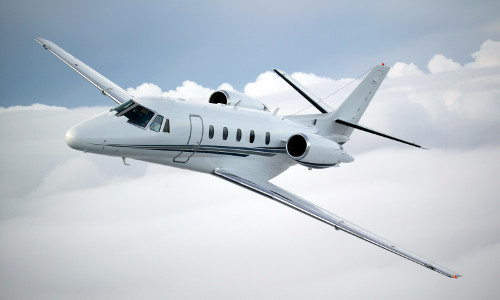Purchasing a new private jet in Germany is a significant investment that requires careful planning, extensive research, and a deep understanding of both the aviation market and regulatory environment. This guide will walk you through the essential steps of purchasing a new private jet in Germany, ensuring a smooth and successful acquisition.
1. Understanding Your Requirements

Defining Your Needs
Before beginning your search, it’s important to define your specific needs and preferences:
- Purpose of Use: Determine if the jet will be used for business, personal travel, or a combination of both. This influences the type, size, and range of the jet you should consider.
- Passenger Capacity: Identify the number of passengers you typically need to accommodate, which helps in choosing the appropriate aircraft size.
- Range: Consider the typical distances you will be flying. Jets have varying ranges, from short regional flights to long-haul international travel.
- Budget: Establish a comprehensive budget that includes not only the purchase price but also ongoing costs such as maintenance, fuel, insurance, and crew salaries.
Researching the Market
Conduct thorough research to understand the market dynamics:
- Aircraft Types: Familiarize yourself with different categories of jets, including light jets, midsize jets, large jets, and ultra-long-range jets.
- Models and Manufacturers: Research various aircraft models and manufacturers. Popular manufacturers include Gulfstream, Bombardier, Dassault, and Embraer.
- Market Trends: Stay updated on current market trends, pricing, and technological advancements. Industry publications, online resources, and aviation trade shows can provide valuable insights.
2. Engaging with Industry Professionals
Hiring an Aviation Consultant or Broker
An aviation consultant or broker can be invaluable throughout the purchasing process:
- Expertise: Provide expert advice on aircraft selection, market conditions, and negotiation strategies.
- Access to Inventory: Offer access to a wide range of aircraft options and facilitate introductions to manufacturers and sellers.
- Negotiation: Assist in negotiating favorable terms and pricing, ensuring you get the best value for your investment.
Working with Aircraft Manufacturers
Direct engagement with aircraft manufacturers can also be beneficial:
- Manufacturer Representatives: Contact representatives from manufacturers to discuss your needs and explore available models. They can offer detailed specifications, customization options, and pricing.
- Factory Tours: Arrange visits to manufacturing facilities to view the aircraft in production, explore customization options, and assess quality control processes.
3. Selecting the Right Aircraft
Types of Aircraft
Based on your needs, select the appropriate type of aircraft:
- Light Jets: Suitable for short-haul flights, accommodating up to 8 passengers. Examples include the Cessna Citation CJ4 and Embraer Phenom 300.
- Midsize Jets: Ideal for medium-haul flights with a capacity of 7-9 passengers. Examples include the Hawker 900XP and Bombardier Learjet 75.
- Large Jets: Designed for long-haul flights with more space and comfort, accommodating up to 19 passengers. Examples include the Gulfstream G650 and Bombardier Global 6000.
- Ultra-Long-Range Jets: Capable of non-stop international flights with exceptional range and luxury, such as the Gulfstream G700 or Bombardier Global 7500.
Customization Options
Consider customization options to tailor the jet to your preferences:
- Interior Configuration: Choose from various interior layouts, including seating arrangements, cabin finishes, and entertainment systems.
- Avionics: Select advanced avionics and navigation systems based on your operational needs and preferences.
- Performance Upgrades: Explore options for performance enhancements, such as extended range or improved fuel efficiency.
4. Financing and Legal Considerations
Financing Options
Purchasing a private jet typically involves substantial financing. Explore the following options:
- Traditional Loans: Banks and financial institutions offer loans secured against the aircraft. Compare rates and terms to find the best option.
- Leasing: Consider leasing options, including operating leases and finance leases, which may offer flexibility and lower upfront costs.
- Specialized Aviation Lenders: Some lenders specialize in aviation financing and can provide tailored solutions for jet purchases.
Legal and Regulatory Compliance
Ensure compliance with all relevant regulations and legal requirements:
- Registration: The aircraft must be registered with the Luftfahrt-Bundesamt (LBA), Germany’s aviation authority. This includes obtaining an appropriate certificate of registration and ensuring compliance with German aviation regulations.
- Title and Ownership: Conduct a title search to verify that the aircraft is free of liens or encumbrances. Ensure proper transfer of ownership and registration.
- Tax Implications: Understand the tax implications of the purchase, including Value Added Tax (VAT) and other applicable taxes in Germany. Consult with a tax advisor to manage these considerations effectively.
Contract and Negotiation
Negotiate and finalize the purchase agreement with the following key elements:
- Purchase Price: Clearly outline the agreed price and payment terms in the contract.
- Pre-Purchase Inspection: Include terms for a pre-purchase inspection, detailing the scope of the inspection and conditions for addressing any issues found.
- Warranties and Representations: Specify warranties and representations regarding the aircraft’s condition, performance, and compliance with regulations.
- Closing Conditions: Detail the conditions that must be met before closing the deal, including the transfer of title and registration.
5. Conducting a Pre-Purchase Inspection
Selecting an Inspection Facility
Choose a reputable maintenance facility or aviation maintenance technician to conduct a thorough pre-purchase inspection. The inspection should cover:
- Airframe and Engines: Inspect the aircraft’s airframe and engines for any signs of wear, damage, or necessary repairs.
- Avionics and Systems: Ensure that all avionics and onboard systems are functioning correctly and meet current standards.
- Interior and Exterior: Assess the condition of the aircraft’s interior and exterior, including any cosmetic wear and tear.
Reviewing Inspection Results
Carefully review the inspection report and discuss any findings with your consultant or broker. Based on the results:
- Address Issues: Negotiate with the seller to address any significant issues or repairs needed.
- Reevaluate Pricing: Consider adjusting the purchase price if substantial issues are identified during the inspection.
Test Flight
A test flight is an essential step to ensure the aircraft performs as expected. During the test flight:
- Evaluate Performance: Assess the aircraft’s handling, performance, and comfort.
- Verify Specifications: Ensure that the aircraft meets all specified performance criteria and your expectations.
6. Finalizing the Purchase
Closing the Deal
With the inspection and test flight completed, proceed with finalizing the purchase:
- Final Payment: Arrange for the final payment according to the terms of the purchase agreement.
- Transfer of Ownership: Complete all necessary paperwork to transfer ownership and register the aircraft in your name with the LBA.
- Insurance: Obtain appropriate insurance coverage for the aircraft, effective from the moment of ownership transfer.
Delivery and Acceptance
Coordinate the delivery and acceptance of the aircraft:
- Delivery Location: Agree on a delivery location, which could be the manufacturer’s facility or another mutually agreed-upon location.
- Acceptance Flight: Conduct a final acceptance flight to verify that the aircraft meets all agreed-upon specifications and is in satisfactory condition.
- Final Documentation: Complete any remaining documentation and formalities to officially take possession of the aircraft.
7. Post-Purchase Considerations
Setting Up Operations
Once you have taken delivery of your new private jet, set up operations, including:
- Hiring Crew: Recruit qualified pilots, co-pilots, and cabin crew if necessary. Ensure that they meet all required certifications and training.
- Maintenance Program: Establish a regular maintenance schedule to ensure the aircraft remains in optimal condition. Adhere to LBA regulations for maintenance and inspections.
- Operational Management: Consider engaging an aircraft management company to handle day-to-day operations, including scheduling, maintenance, and compliance.
Ongoing Costs and Budgeting
Plan for ongoing costs associated with jet ownership:
- Fuel Costs: Monitor and manage fuel consumption and associated costs.
- Maintenance and Repairs: Adhere to scheduled maintenance and budget for any unforeseen repairs.
- Hangar Fees: Account for the costs of hangar space or storage, which may vary depending on location.
- Crew Salaries and Training: Ensure adequate compensation and ongoing training for your crew.
Upgrades and Modifications
Over time, you may want to explore upgrades or modifications to enhance your aircraft’s performance, comfort, or compliance with new regulations. Plan for these potential costs and improvements as part of your long-term ownership strategy.
Conclusion
Purchasing a new private jet in Germany is a complex and significant undertaking that requires careful planning, expert guidance, and thorough research. By defining your needs, engaging with industry professionals, and navigating the legal and financial considerations, you can successfully acquire a private jet that meets your requirements and provides exceptional value. With proper planning and management, owning a private jet offers unparalleled convenience, flexibility, and luxury in your travel experience. Following these steps will help ensure that your investment is sound and that you enjoy the benefits of private jet ownership for years to come.
